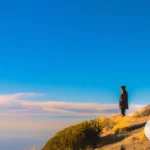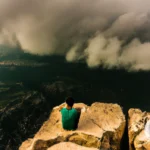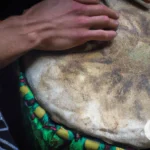Embarking on a quest for vision may sound like something out of a fantasy novel, but the reality is that vision quests have been practiced in various cultures for centuries. These quests involve seeking spiritual guidance and personal revelation by spending time alone in nature without food or water for several days. In shamanic traditions, vision quests are often used to access knowledge that cannot be obtained through ordinary waking consciousness and to connect with one’s inner nature. In this article, we’ll explore the practice of vision quests in shamanic traditions, including their significance, preparation, conduct, interpretation, and benefits.
What is a Vision Quest?
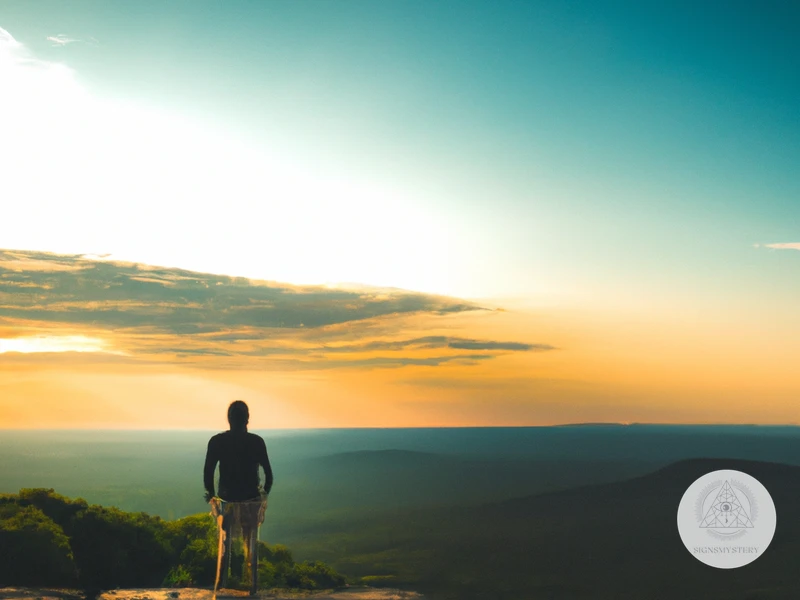
A Vision Quest is a spiritual practice that has been performed by many indigenous cultures around the world for centuries. It involves going on a journey into the wilderness alone, without food or water for several days, in order to receive guidance and insight from the spirit world. The person embarking on the vision quest seeks to connect with their inner self, their ancestors, and the natural world around them. It is seen as a rite of passage, a way of shedding old patterns and behaviors, and a pathway to personal transformation. The experience can be intense and challenging, but those who complete a vision quest often report feeling a greater sense of purpose, clarity, and connection to the world around them. To perform a vision quest, it is important to prepare oneself mentally and physically, choose a suitable location and time, gather necessary supplies, and enter a sacred and respectful state of mind. This traditional practice is just one of many powerful shamanic rituals that can help individuals connect with their spirit and the world around them, including drumming, animal totems, and plant medicine.
Definition
Definition:
A Vision Quest is a spiritual practice that involves a period of fasting, meditation and isolation in nature with the goal of seeking a vision or deep spiritual insight. It is a traditional practice among Native American and other indigenous cultures and is still widely used today. The Vision Quest experience is a powerful and transformational journey, and is often conducted as part of a shamanic tradition.
During a Vision Quest, the seeker often goes without food and water for up to four days and nights, to help induce a state of altered consciousness and enhance spiritual awareness. The seeker will usually be alone, or accompanied only by a guide or a shaman, and will spend the duration of their Quest in nature, often in a secluded spot, without the use of modern technology or any other distractions.
The primary objective of the Vision Quest is to seek guidance, clarity and understanding of one’s life purpose and direction. It is thought that this experience allows the seeker to tap into a deeper sense of self and expand their consciousness to a higher plane, where they can access spiritual guidance and insight.
There are different variations of the Vision Quest practice across different cultures and regions, each with their variations on the process, length, and intensity of the Quest. Regardless of the specific details, the Vision Quest is a powerful and sacred ceremony that plays a significant role in various shamanic traditions.
As mentioned, many shamanic traditions incorporate Vision Quests into their practices, alongside other rituals and ceremonies. For instance, shamanic smudging ceremonies may be carried out beforehand to prepare for the Quest or provide protection and purification, while shamanic dancing may be used to enhance spiritual awareness. Fire is also an integral component in many shamanic cultures, and may be used for ritualistic purposes during the Vision Quest, or in other shamanic ceremonies.
In the next section, we’ll explore the history and cultural significance of Vision Quests to better understand their importance in shamanic traditions.
History and Cultural Significance
The practice of vision quests has a long history and cultural significance in various indigenous and shamanic traditions around the world.
In Native American cultures, vision quests were often undertaken by young men seeking guidance and direction for their lives. The quest involved a period of isolation in nature, fasting, and prayer. The vision or message received during the quest was believed to come from a spirit or animal guide and was seen as a source of personal power and protection.
Similarly, in Australian Aboriginal cultures, the practice of “walkabout” or “going on country” involved young people taking extended solitary journeys in the wilderness to connect with their ancestral lands and the spiritual realm.
Shamanic cultures in South America also have a tradition of vision quests, often involving the use of ayahuasca or other plant medicines to induce altered states of consciousness and connect with spirit guides and ancestors.
The cultural significance of vision quests lies in their role as a rite of passage, marking a transition from one stage of life to another. They are seen as a way to connect with the natural world, access inner wisdom, and receive guidance from the divine.
Vision quests reflect the deep reverence and spiritual connection that indigenous cultures have with nature and the unseen realms.
Shamanic dance and chanting are also important elements of many shamanic rituals, as they are believed to help open the heart and connect with the spirit world. Fire is another significant symbol in shamanic rituals, representing purification, transformation, and the power of the divine. Smudging with sacred herbs like sage or palo santo is often used to cleanse and purify oneself before embarking on a vision quest.
The history and cultural significance of vision quests reveal the rich, diverse traditions and beliefs of indigenous and shamanic cultures around the world. These practices offer a powerful way to connect with nature, spirit, and one’s own inner truth.
The Role of Vision Quests in Shamanic Traditions
In shamanic traditions, a vision quest is a key practice used to connect with the spiritual realm and access inner guidance. The vision quest serves as a transformative experience that reveals one’s true nature and offers insight into their life purpose. It’s a time of introspection, fasting, and deep meditation in nature. By participating in a vision quest, individuals gain a better understanding of themselves and their connection to the world around them. Shamans guide participants through the process of preparing for and conducting a vision quest. The role of the shaman is to provide sacred space and interpret the messages received during the vision quest. The practice of vision quest is often combined with other shamanic rituals, such as smudging or chanting. The importance of vision quests lies in providing a means of accessing spiritual guidance and uncovering one’s true nature.
How Vision Quests Help Access Spiritual Guidance
Vision quests are considered as powerful gateways for accessing spiritual guidance, as well as for tapping into one’s inner wisdom. These experiences have been a longstanding way of seeking insight and spiritual connection in shamanic traditions. Here are some ways in which vision quests help access spiritual guidance:
1. Through reflection and contemplation: Vision quests facilitate deep reflection and contemplation of one’s life and purpose. Through extended periods of solitude, fasting, and meditation in nature, one can connect with the universe and access spiritual guidance.
2. Through the release of external distractions: Vision quests are typically performed in remote locations that are free from external distractions. This allows individuals to focus solely on their inner journey and to engage with the natural world around them. The lack of external distractions contributes to facilitating a deeper spiritual connection.
3. Through the opening of the senses: Spending time in nature during vision quests can awaken the senses and increase one’s sensitivity to the world around them. This can lead to deeper intuitive insights and spiritual experiences.
4. Through symbolic visions: Vision quests often involve receiving symbolic visions that provide insights into one’s past, present, and future. These visions can be interpreted to gain a deeper understanding of oneself and one’s spiritual journey.
5. Through connection with spiritual guides: While on a vision quest, individuals may encounter spiritual guides who offer guidance and support. They may take the shape of animals, ancestors, or other spiritual beings. These encounters provide another avenue for spiritual insights and guidance.
Vision quests help access spiritual guidance through reflection and contemplation, release of external distractions, opening of the senses, symbolic visions, and connection with spiritual guides. They are powerful experiences that can provide deep insight and connection to one’s inner wisdom and the spiritual world.
What Vision Quests Reveal About One’s Inner Nature
Vision quests offer participants an opportunity to connect with their inner selves and access parts of their subconscious minds that may have been buried or repressed. By going through a period of fasting and isolation in nature, vision questers create conditions that allow them to delve deep into their psyche and explore the hidden aspects of their persona that they may not have been aware of before.
This process can be a powerful way to gain insight into one’s own personality, character strengths, and weaknesses. It can also be an effective way to uncover different parts of oneself that have yet to be discovered. During a vision quest, people may experience vivid dreams, hallucinations and other altered states of consciousness that reveal aspects of their psyche that they may not have been aware of.
Sometimes, people may see aspects of themselves that they have disowned or repressed because of cultural, familial or societal conditioning. This process can be painful, but ultimately it can lead to transformative experiences if the person is willing to confront their shadow self and integrate those disowned aspects of themselves into their conscious awareness.
In this way, vision quests can reveal the true nature of a person and help them to connect with their authentic selves. By engaging in this process of self-discovery and self-exploration, individuals can gain a deeper understanding of their place in the world and their unique purpose in life.
For those interested in learning more about shamanic rituals and practices, there are various articles available on the internet. To explore the significance of smudging in shamanic rituals, click here. To learn more about the importance of fire in shamanic rituals, click here. For tips on how to create a personal shamanic ceremony, click here. To learn about ancient shamanic chanting, click here. To read about different types of shamanic rituals, click here.
Preparing for a Vision Quest

Preparing for a Vision Quest involves mental and physical readiness, selecting a location and time, and gathering necessary supplies. Mentally, one should be willing to go through a transformative experience and be open to receiving guidance from the spiritual world. Physically, it is important to build stamina for fasting and the rigors of being in nature for an extended period. Selecting a location and time that feels sacred and aligned with one’s intentions is crucial. This could be a wilderness area or one’s own backyard. Gathering supplies such as a tent, sleeping bag, water, and any sacred items, such as a drum or crystals, can enhance the experience. The preparation phase is the foundation for a successful Vision Quest. It is crucial to honor this time and approach it with intention and respect.
Mental and Physical Preparation
Preparing for a Vision Quest requires both mental and physical preparation. This is essential for ensuring that the experience is safe and that the participant is ready to fully engage with nature and the inner guidance that will come through.
Mental Preparation:
- Reflect on intentions: Before embarking on a Vision Quest, it’s important to take some time to reflect on your intentions for the experience. What questions do you want to explore? What do you hope to learn? This will help guide your journey and give it focus.
- Set boundaries: It’s important to set clear boundaries for yourself before the Vision Quest. This may include establishing what you are and are not willing to explore during the experience and how long you will be undertaking the quest.
- Build a support network: Going on a Vision Quest alone can be challenging. Building a support network, such as a trusted friend or shaman, can be helpful for grounding and providing support during and after the experience.
- Cultivate inner stillness: Practicing meditation and mindfulness can be helpful for cultivating inner stillness, which is essential for receiving guidance during the Vision Quest.
Physical Preparation:
- Get in shape: Undertaking a Vision Quest can be physically demanding. Preparing physically through exercise and healthy eating can help ensure you are in top physical condition for the experience.
- Pack necessary supplies: The right supplies can make all the difference in the success of your Vision Quest. Necessary items may include appropriate clothing, a tent or sleeping bag, water, and a journal.
- Adjust to the environment: Spending time outdoors prior to the Vision Quest can help adjust an individual to the environment they will be spending time in.
By taking these steps to prepare both mentally and physically, one can enter into the Vision Quest experience feeling grounded and ready to receive guidance from nature and the spirit world.
Choosing a Location and Time
When selecting a location and time for your vision quest, pay attention to the details that will best support your spiritual journey.
Consider selecting a location that has personal significance or natural beauty, such as a scenic overlook, a quiet forest, or a remote mountain.Many traditional shamanic cultures regard natural environments such as mountains, rivers, or forests as sacred spaces that hold ancestral wisdom and spiritual power.
It is also important to choose a time that is conducive to your vision quest experience. Many vision quests are conducted during a changing of seasons or during important lunar phases in shamanic traditions. A new moon is a powerful time of new beginnings and spiritual growth, while a full moon enhances intuition and psychic ability.
Additionally, consider selecting a time of year when the weather will support your experience. For example, a cold, rainy season may not be the best time for a vision quest as it could lead to discomfort or hypothermia, whereas a mild and sunny season creates ideal conditions for sitting long hours in meditation.
Above all, trust your intuition when selecting the location and time for your vision quest. During this time of spiritual growth, it is important to tune inwards and outwardly connect with the natural world. Take the time necessary to find the right space and moment for your journey.
Gathering Supplies
When it comes to gathering supplies for a vision quest, it’s important to keep in mind that you will be spending time alone in nature, without access to modern amenities. It’s crucial to pack carefully and thoughtfully.
Some of the essential supplies that you’ll need to bring with you include a camping tent or shelter, a sleeping bag and sleeping pad, warm and comfortable clothing suitable for the climate and season, sturdy hiking boots, a first aid kit, a water filter or purification tablets, a flashlight or headlamp, a compass or map, a knife or multi-tool, a water bottle or hydration system, and a journal or notebook.
In addition to these supplies, you may also want to bring some personal items that will help you feel grounded and connected to your daily life. This could include a photograph of loved ones, a favorite book, a musical instrument, or a religious or spiritual object that holds significance for you.
It’s important to pack light and only bring what you truly need, as you’ll be carrying all of your supplies with you during the quest. Be sure to take into account the length of your quest and how many days you’ll be spending in the wilderness, and gather supplies accordingly.
By taking the time to carefully prepare and gather supplies for your vision quest, you’ll be able to fully immerse yourself in the experience and focus on connecting with your inner self and the natural world around you.
Conducting a Vision Quest
When conducting a vision quest, there are several important steps to follow. Firstly, it is essential to enter sacred space with intention and reverence. This can be done through prayer, meditation or ritual. Secondly, as part of the quest, fasting and meditation are critical to facilitate deeper spiritual insight. This involves abstaining from food and distractions, allowing the mind to connect with the body and spirit. Finally, engaging with nature and inner guidance is crucial. This can be achieved by spending time alone in a natural setting or through journeying or visualization techniques. By doing so, one can gain insights that reveal a deeper understanding of oneself and one’s place in the world. It is important to remember that the experience of a vision quest is unique to each individual, and the interpretation of the vision requires time and contemplation. Through careful decoding and integration, the benefits of the quest can be realized more fully and contribute to personal growth and transformation.
Entering Sacred Space
Entering sacred space is a vital aspect of vision quests that facilitates spiritual connection and alignment with the surrounding natural environment. When one enters sacred space, they create a safe and sacred environment where they can connect with their inner self, the spirit world and seek guidance and answers to important questions.
The process of entering sacred space involves setting intentions and creating a space that is conducive to spiritual connection. The seeker must clear their mind of all distractions and approach the sacred space with reverence and respect. This process involves cleansing the space, such as by smudging with sage or tobacco, to remove any negative energy and preparing oneself mentally by focusing on their intentions.
Once the space is prepared, the seeker enters the sacred space with an open mind and heart, allowing themselves to fully connect with the natural world around them. They may engage in meditation, drumming, or other ritualistic practices to deepen their connection with the spiritual realm. It is crucial to remain present in the moment and open to receiving messages from the spirits that inhabit the space.
During the process of entering sacred space, the seeker may feel a sense of detachment from the physical world. They may experience a heightened sense of awareness and a feeling of oneness with nature. This allows them to access a deeper level of meditation and connect with their inner self and the spiritual realm.
Entering sacred space is a sacred and essential part of the vision quest practice. This process allows the seeker to create a safe and sacred space to connect with their inner self and the spirit world. The seeker must approach the sacred space with reverence and clear intentions to gain the most benefit from the practice.
Fasting and Meditation
Fasting and Meditation During a Vision Quest
During a vision quest, fasting and meditation are two essential practices. Fasting is the act of abstaining from food. It helps create an altered state of consciousness by freeing up energy that would otherwise be used for digestion. It is a way of showing respect and gratitude to the spirits, and it helps purify the body and mind for the spiritual journey ahead.
Meditation involves focusing on a particular thought, object, or activity to achieve a clear and calm mental state. It is a way of quieting the mind and connecting with the inner self and the natural world. During a vision quest, meditation can help create a receptive mindset that is open to receiving spiritual guidance and insights.
Preparing for Fasting
Preparing for a fast requires careful planning and consideration of one’s physical and mental health. It is recommended to consult with a healthcare professional before beginning a fast. Here are some tips for preparing for a fast:
| Tip | Description |
|---|---|
| Gradual transition | Gradually reduce food intake in the days leading up to the fast to avoid shock to the body. |
| Hydration | Drink plenty of water to prevent dehydration and to help flush out toxins. |
| Rest | Get plenty of rest to conserve energy and prepare the body and mind for the fast. |
| Food choice | Avoid processed foods, sugary drinks, and alcohol in the days leading up to the fast. |
The Process of Fasting
The process of fasting during a vision quest can vary depending on the individual and the traditions followed. Typically, a vision quest can last anywhere from one to several days, and during this time, individuals abstain from food and drink, except for water. Here are some tips for the fasting process:
- Retreat to a quiet, peaceful location away from distractions.
- Set an intention for the fast to help focus the mind and soul.
- Drink plenty of water to stay hydrated.
- Avoid strenuous activities to conserve energy.
- Stay grounded by connecting with nature through walks, meditation, or prayer.
- Stay mindful of the body’s sensations and mental states to gain insights into one’s spiritual journey.
- Break the fast gradually and mindfully to avoid digestive issues.
Meditation During a Vision Quest
Meditation is an essential aspect of a vision quest. It can help quiet the mind and open up space for spiritual insights and guidance. Here are some tips for meditation during a vision quest:
- Find a quiet, peaceful location free from distractions.
- Sit in a comfortable position and close the eyes.
- Breathe deeply and slowly, focusing on the sensation of the breath inthe body.
Subscribe to Our Newsletter
Sign up to receive the latest news and updates.
- Visualize a sacred object or symbol that inspires the soul, such as a mountain or a tree.
- Quiet the mind by focusing on the sound of the breath or a mantra.
- Stay open and receptive to insights and guidance that may arise.
- Record any thoughts or insights that come up during meditation for later reflection.
Fasting and meditation during a vision quest can be challenging but are essential practices that can help individuals connect with their inner selves, the natural world, and spiritual guidance. With careful preparation and an open mind, vision quests can be transformative experiences that offer healing and insights for life’s journey.
Engaging with Nature and Inner Guidance
Engaging with nature and inner guidance is a crucial element of a successful vision quest. It allows the seeker to connect with their inner self and higher power, as well as attune to the natural world around them.
During this stage, the seeker can sit or wander in the wilderness in solitude and silence, opening up space for reflection and meditation. They may focus on their breath, watch animals, listen to bird songs, or simply observe the landscape. Allowing oneself to appreciate the beauty of the natural environment can evoke profound insights and awaken spiritual energies.
Many seekers report encountering spirit animals, visions, or feeling a deep sense of oneness with nature. This connection with nature can help one understand their place in the world and foster a deeper appreciation for the environment.
It is essential to be open and receptive to whatever comes up during this time of engagement. One should pay attention to their dreams, visions, and any other signs that present themselves during the vision quest.
The seeker must also be mindful of personal safety and respect the environment they are in. They may choose to bring an object such as a rock or feather into their mediation space to use as a focal point for their connection to nature.
Engaging with nature and inner guidance allows the seeker to access the wisdom of the natural world and their own inner self, providing invaluable insights and guidance that can transform their life. It’s a powerful experience that can reaffirm the seeker’s connection to the natural world and inspire them to make positive changes in their lives and communities.
Interpreting the Vision
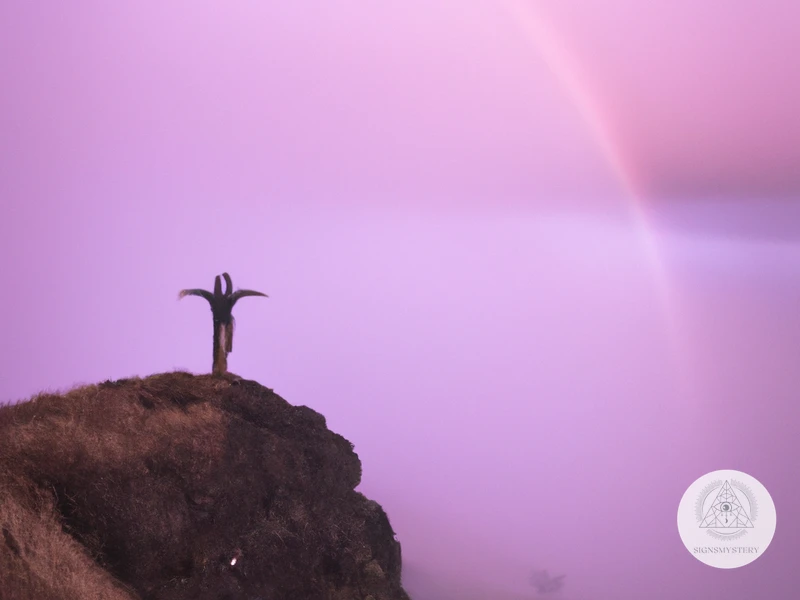
Once the vision quest is complete, it’s time to interpret the visions and insights. This can be a deeply personal and introspective process that requires reflection and openness to new ideas. It’s important to approach interpretation with an open mind and not be too attached to any one interpretation. Decoding symbols and insights requires looking at the experience from multiple angles and considering how it relates to one’s life and experiences. One helpful tool is to write down the vision and any associated thoughts or feelings, as well as any recurring motifs or symbols that appeared. This can help clarify the meaning behind the experience. Additionally, integrating the experience into daily life is important to truly reap the benefits of the vision quest. This may involve making changes to one’s behavior or mindset, based on the insights gained during the quest. Interpretation is a vital part of the vision quest experience and can lead to profound personal growth and spiritual development.
Decoding Symbols and Insights
After completing a vision quest, the seeker must interpret the symbols and insights gained during the experience. The symbols and messages received during the vision quest can be highly personal and unique to the individual. It is essential to take the time to decode and understand them fully.
One way to decode symbols is to write them down while they are fresh in the seeker’s mind. This will allow the seeker to reflect and analyze the symbols and messages over time. Sometimes, symbols may reveal themselves more clearly over time, and provide deeper insights than originally understood.
The seeker should also consider the context of the vision quest when interpreting the symbols and insights. Understanding the time and place where the vision quest occurred, and the seeker’s physical, emotional, and mental state at the time, can provide crucial context needed for interpretation.
It is also important to approach the symbols and insights with an open and curious mindset. Seekers should resist the urge to force meanings or interpretations onto their experiences. Instead, they should allow the symbols and insights to reveal themselves naturally.
Additionally, seeking the guidance of a trusted spiritual mentor or shaman can provide invaluable insights into the interpretation of symbols gained during a vision quest. They can offer wisdom and guidance to help seekers decode their experiences on a deeper level.
Decoding symbols and insights gained during a vision quest can be a challenging but rewarding process. By taking the time to understand and reflect on the experience, seekers can gain powerful insights into their inner world and receive guidance for their life journey.
Integrating the Experience Into Daily Life
Integrating the experience of a vision quest into daily life can be a transformative process. It requires a willingness to change and a commitment to continue the work started during the quest.
One way to start integrating the experience is through reflection and journaling. Writing down the insights gained during the quest can help to solidify them in the mind and keep them at the forefront of consciousness. This can also facilitate deeper understanding and realization of their meaning and importance in everyday life.
It is also important to take concrete steps towards incorporating the lessons of the vision quest into daily routines. This might mean simplifying one’s life, making changes to relationships, or taking action towards a new purpose or goal identified during the quest. Setting intentions and taking action on these intentions is an essential part of integrating the vision quest experience into daily life.
Additionally, it is important to stay connected to the support network that may have been established during the quest. This could mean continuing to meet with a group of fellow questers or seeking out a mentor who has experience with integrating vision quest experiences into daily life. This support can be crucial in maintaining motivation and accountability in the process of ongoing transformation.
Ultimately, integrating the experience of a vision quest into daily life requires a willingness to continue to explore one’s inner landscape and make changes as needed. It can be a challenging but rewarding process that can lead to greater clarity, purpose, and fulfillment in life.
The Benefits of Vision Quests
Embarking on a vision quest can have numerous beneficial effects on one’s personal and spiritual growth. One of the primary benefits of a vision quest is the potential for healing and transformation. By disconnecting from the distractions of everyday life and immersing oneself in nature, individuals may gain new insights and perspectives on their lives. Additionally, the experience of fasting and meditation during a vision quest can help individuals connect with their inner selves and access deeper parts of their consciousness. This can lead to a greater sense of clarity, purpose, and direction. Vision quests can deepen one’s connection to self, spirit, and community, fostering a greater appreciation for the interconnectedness of all things. The benefits of vision quests are numerous and potentially life-changing, with the potential to unlock hidden potential and facilitate personal growth.
Healing and Transformation
The practice of vision quests is known to bring about healing and transformation on both physical and spiritual levels. Through intense introspection and the guidance of spiritual entities, individuals can gain clarity about their life purpose and direction, as well as work through past traumas and emotional baggage.
Here are some of the ways in which vision quests can promote healing and transformation:
- Releasing emotional and mental blockages: Through deep meditation and fasting, individuals can release negative emotions and mental patterns that no longer serve them. This can lead to greater clarity, peace of mind, and a sense of purpose.
- Physical healing: The intense focus and connection with nature during a vision quest can also facilitate physical healing. Some individuals have reported experiencing spontaneous healings or improvements in chronic conditions.
- Reconnecting with one’s true nature: By engaging with the natural world and connecting with spirit guides, individuals can gain a greater understanding of their authentic selves and purpose in life. This can lead to a profound sense of fulfillment and joy.
- Breaking negative patterns: Vision quests can also be an opportunity to break free from negative patterns and habits. By gaining clarity about one’s values and priorities, individuals can make positive changes in their lives and relationships.
The healing and transformative aspects of vision quests make them a powerful tool for personal growth and spiritual development. While the process can be challenging and demanding, the rewards can be truly life-changing.
Deepening One’s Connection to Self, Spirit and Community
Deepening one’s connection to self, spirit, and community is one of the many benefits of embarking on a vision quest. It is a transformative experience that allows individuals to connect deeply with the essence of their being, the spirit world, and their community. Here are some ways in which vision quests allow one to deepen their connection on these levels:
Self:
- Facilitates self-discovery: Through fasting, meditation, and solitude, one gains clarity and insight into their true self. They learn to let go of limiting beliefs, patterns of behavior, and old identities that no longer serve them.
- Increases self-awareness: Vision quests allow individuals to become more in tune with their thoughts, emotions, and body. They learn to become more mindful of their surroundings and focus on the present moment.
- Boosts confidence: Overcoming challenges such as fasting, sleeping on the ground, and facing one’s fears can boost one’s self-confidence and self-esteem. This newfound confidence can extend to other areas of their life, such as relationships and career.
Spirit:
- Enhances spiritual connection: Vision quests allow individuals to tap into their inner spirit and connect with the unseen world. They may receive guidance, wisdom, and clarity from their ancestors, spirit guides, or the Divine.
- Deepens gratitude: Spending time in nature and centering oneself in a spiritual practice can make one more grateful for the present moment. It allows for appreciation of the interconnectedness of all things and the abundance that surrounds us.
- Brings healing: Vision quests can act as a catalyst for emotional, mental, and spiritual healing. It allows individuals to confront past traumas, release suppressed emotions, and find inner peace.
Community:
- Strengthens bonds: After completing a vision quest, individuals may feel a deeper sense of connection to their community. They may appreciate the support and encouragement from their loved ones during their journey.
- Encourages altruism: Vision quests may inspire individuals to give back to their community and serve others in a meaningful way. It can be a way to contribute to the collective consciousness.
- Develops leadership: The self-awareness, confidence, and spiritual connection gained from a vision quest can make one a better leader. It allows individuals to lead with compassion, empathy, and a sense of purpose.
Embarking on a vision quest can be a profound way to deepen one’s connection to self, spirit, and community. It offers the opportunity for self-discovery, spiritual growth, and a sense of belonging to something greater than oneself.
Conclusion
In conclusion, embarking on a vision quest can be a powerful way to connect with oneself, spirit, and the community. The journey involves mental and physical preparation, choosing a location and time, fasting, meditation, engaging with nature and inner guidance. During the quest, one can access spiritual guidance and gain insights into their inner nature. Decoding symbols and integrating the experience into daily life can lead to healing and transformation. Ultimately, the benefits of a vision quest can deepen one’s connection to self and their community, and lead to a greater sense of purpose and clarity. The practice of vision quests has a long history of cultural significance in shamanic traditions and continues to be relevant in modern times for those seeking spiritual growth and enlightenment.
The Power of Embarking on a Vision Quest
Embarking on a vision quest can be a powerful and transformative experience. By disconnecting from the distractions of daily life and immersing oneself in nature, individuals can gain a deeper understanding of their inner selves and the world around them. The practice of fasting and meditation during a vision quest can help clear the mind and open it up to spiritual guidance.
Through connecting with nature and their inner guidance, individuals may gain insight into their life purpose and direction. This can lead to a sense of clarity and renewed motivation. Additionally, individuals may gain a greater appreciation for the interconnectedness of all things and their place within the larger web of life.
The power of a vision quest lies in its ability to facilitate healing and transformation. By confronting and working through internal struggles and obstacles, individuals can find deeper levels of self-acceptance, forgiveness, and compassion. This can lead to greater emotional and mental well-being, and overall life satisfaction.
One of the most profound effects of a vision quest is the deepening of one’s connection to self, spirit, and community. As individuals gain a greater understanding of their own strengths and weaknesses, they are better equipped to contribute to the well-being of their communities. Through this process of self-discovery and connection, individuals may find a renewed sense of purpose and commitment to serving others.
Embarking on a vision quest can be a powerful and transformative experience that offers many benefits. It can provide individuals with a deeper understanding of themselves, the natural world, and their place within the larger web of life. By facilitating healing, transformation, and deeper connections with self, spirit, and community, a vision quest can lead to greater emotional, mental, and spiritual well-being.
Frequently Asked Questions
What spiritual traditions are associated with vision quests?
Vision quests are common in many indigenous spiritual and shamanic traditions, including Native American, African, and South American traditions.
What kind of guidance can be obtained through vision quests?
Vision quests can provide guidance on many levels, from personal insights to guidance for the entire community. This includes guidance on relationships, life purpose, and healing.
Do I need to have a shamanic background to do a vision quest?
No, you don’t need to have any specific spiritual or shamanic background to do a vision quest. It’s important to approach the quest with an open mind and heart, and to seek guidance from a teacher or guide if necessary.
Is fasting required during a vision quest?
Fasting is a common practice during vision quests, but it is not mandatory. It can be helpful in creating a space for spiritual connection and purification, but it’s important to listen to your body and approach fasting with care.
How long does a typical vision quest last?
A vision quest can last anywhere from one day to several weeks, depending on the tradition and individual preference. Many traditional vision quests last four days and nights.
What kind of supplies do I need for a vision quest?
The necessary supplies for a vision quest will vary depending on location and individual preference, but may include a tent or shelter, sleeping bag, water, and basic food supplies. It’s important to pack minimally and avoid distractions.
What is the role of nature in a vision quest?
Nature plays a vital role in a vision quest, providing a connection to the natural world and a space for spiritual connection. Participants may spend time in nature alone or with a guide, engaging in practices such as meditation, prayer, or reflection.
What is the significance of the vision received during a vision quest?
The vision received during a vision quest is believed to hold great significance and can provide guidance for the individual as well as the community. It’s important to approach the vision with respect and interpret it with guidance from a teacher or guide.
Can a vision quest be dangerous?
As with any spiritual practice, there are potential risks and dangers associated with a vision quest. It’s important to approach the quest with caution and seek guidance from a teacher or guide. Participants should also take necessary safety precautions and ensure proper physical and mental preparation.
What are the long-term benefits of a vision quest?
Long-term benefits of a vision quest may include increased spiritual connection, personal insight, healing, and deeper connection to community and nature. It can also lead to positive life changes and a deeper sense of purpose.





